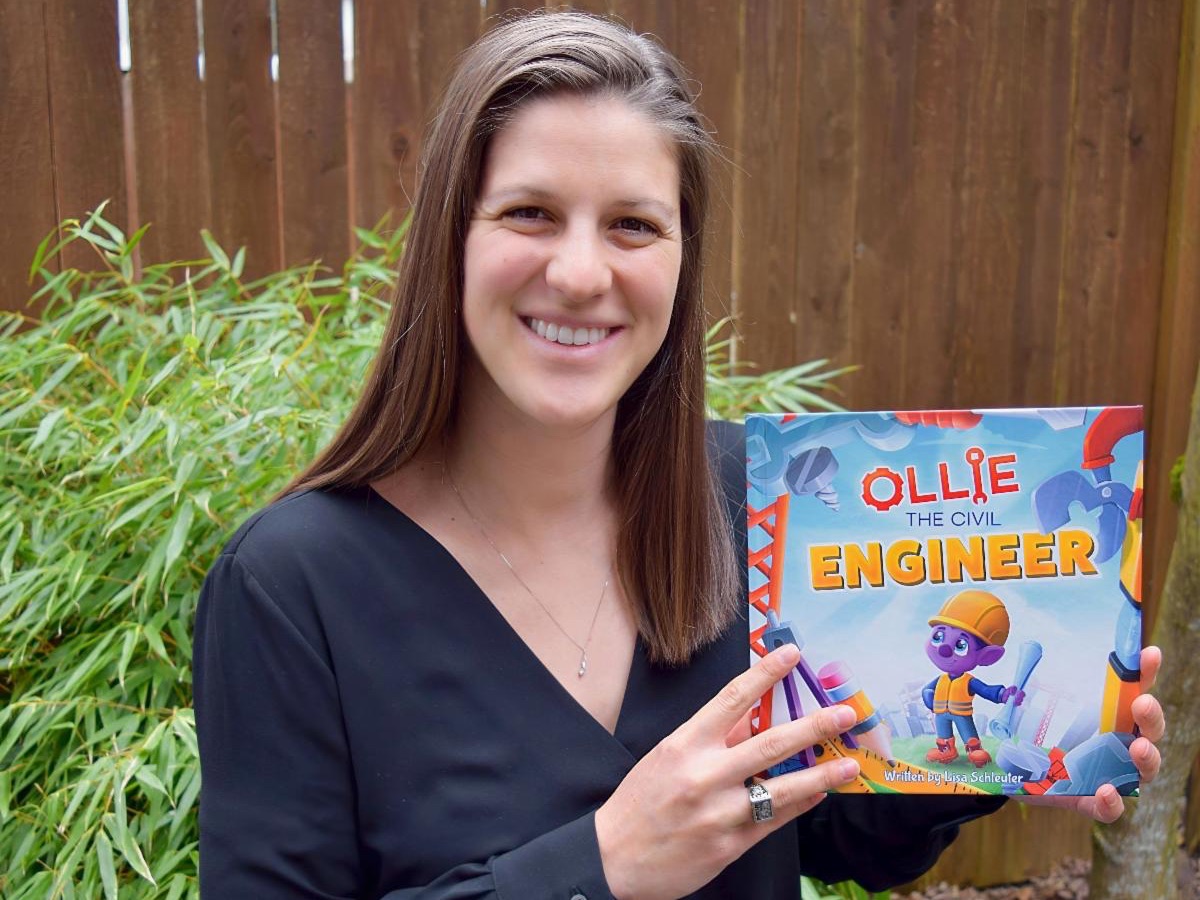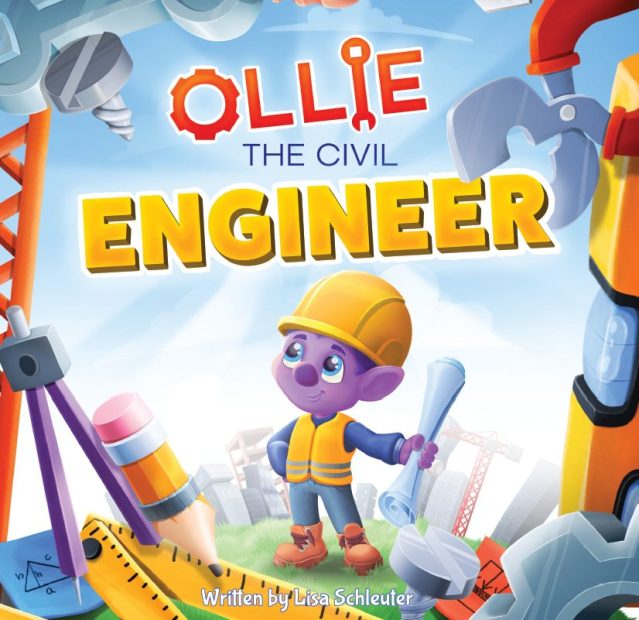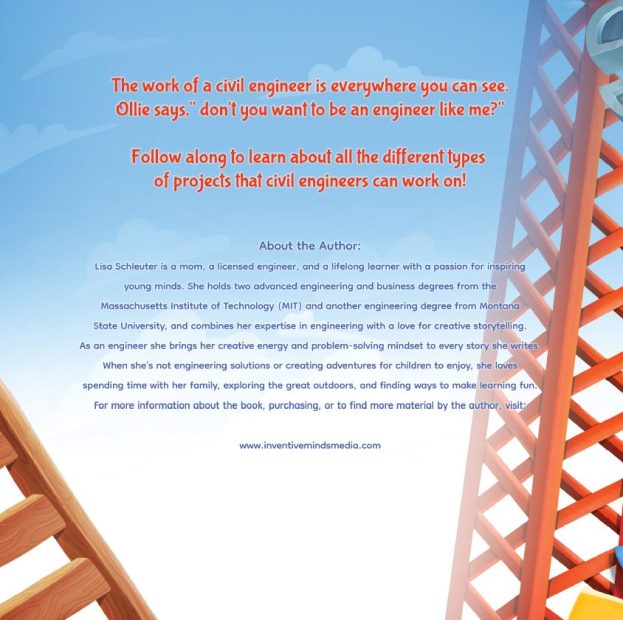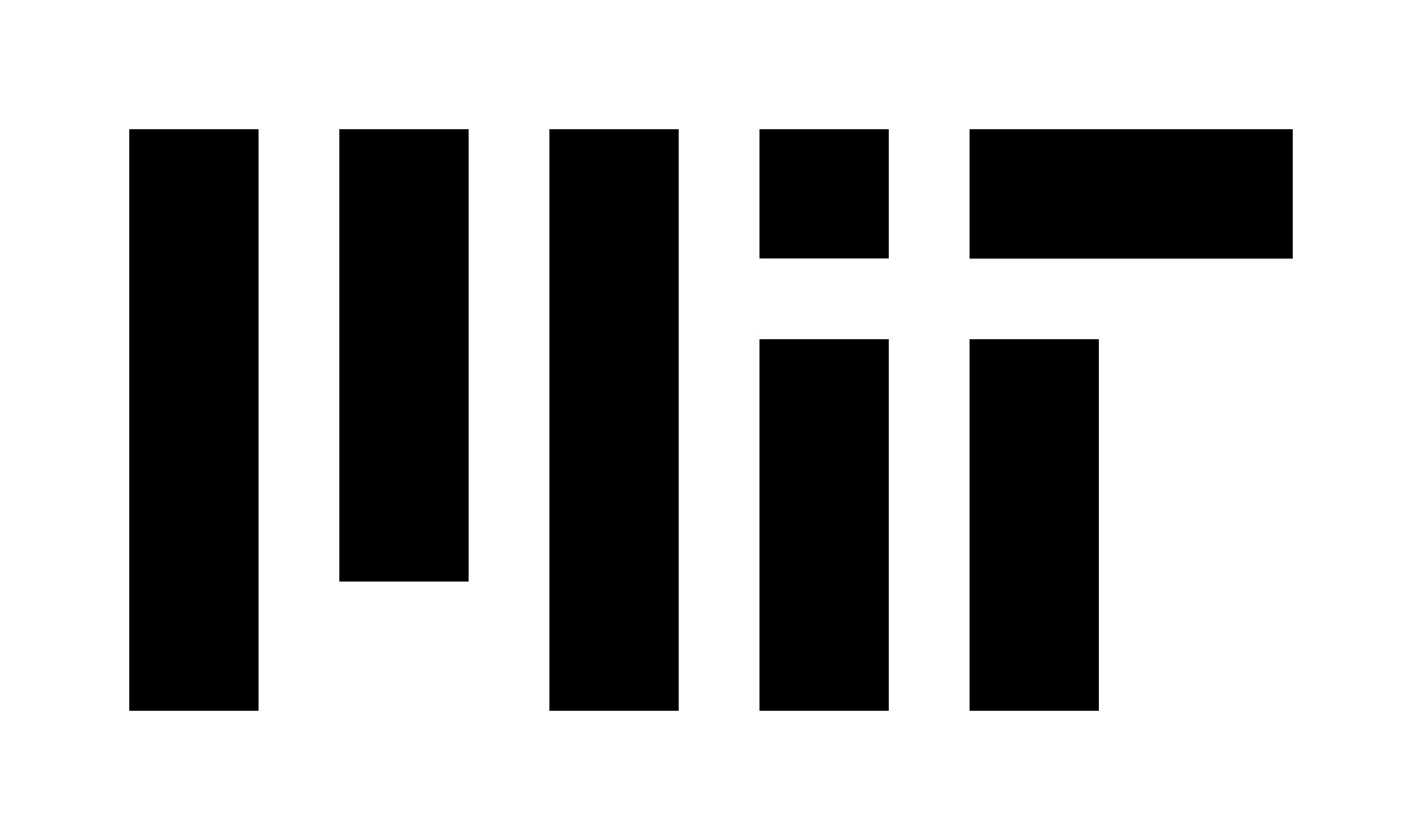Reaching the next generation of civil engineers through storytelling

MIT alumna and Boeing engineer Lisa Schleuter authors children’s book
As a Production Engineering Manager at Boeing, Lisa Schleuter SM ’23, MBA ’23 has spent years navigating complex technical challenges, but her latest venture, a self-published children’s book about civil engineering, introduces young readers to infrastructure and design in a playful and engaging way.
After working as a Structural Engineer at Boeing for seven years, Schleuter’s interest in supply chain and logistics led her to the MIT Leaders for Global Operations (LGO) Dual Degree Program for her Master of Civil and Environmental Engineering and Master of Business Administration as a company sponsored student.
“The dual program was perfect because I wanted more of a business skillset,” she says. “It can be hard to recreate work experiences in the classroom, but I think academic learning can be a great supplemental tool allowing you to reference certain techniques and processes.”
Schleuter recalls being drawn to MIT’s renowned faculty, including her advisors, David Simchi-Levi in the Department of Civil and Environmental Engineering and Sean Willems in MIT Sloan School of Management. “An academic highlight of mine was working with my advisors and having experts in the field on call. The one-on-one mentoring was an invaluable part of my education,” she says.
As a requirement of the LGO program, Schleuter completed a 6-month internship at Symbotic, an American robotics warehouse automation company based in Wilmington, Massachusetts. The project she worked on became the foundation of her thesis, allowing her to take a more in-depth, analytical approach than most roles typically demand. “Gaining exposure to a different company and industry was incredibly valuable,” she says. “Being guided to approach the project analytically and having that framework was a great learning experience.”
Her early career experiences at Boeing showed her that civil engineers can contribute to a wide range of projects beyond traditional infrastructure, including the design and development of airplane structures. It has also given her a diverse range of opportunities, from structural engineer to engineering leadership and management.
“There are so many career paths that may not immediately come to mind,” Schleuter says. “Civil engineering is so encompassing, almost everything we see can be touched by a civil engineer. Once you get into your career, there are a lot of opportunities that can come from having a technical and analytical mindset.”
She notes the importance of developing an understanding of the system and how your work fits into it, especially when venturing outside of the traditional civil engineering path. “Civil engineering students are prepared for more jobs than they realize. College provides you with a toolbox, and it’s up to you how you want to apply your academic learning.”
When she began her undergraduate studies, she initially planned to major in mathematics, admitting that at the time she wasn’t entirely sure what engineers did. “Luckily, I was really on the lookout for what I wanted to do. I think a lot of students might just start one thing and follow it.” After learning more about engineering, she began to pursue a degree in civil engineering at Montana State University. “I liked the math aspect of engineering, but also that you can see physical results and it’s not just theoretical,” she says.
This experience, combined with a lack of technically accurate children’s books about civil engineering, inspired her to write Ollie the Civil Engineer, a book designed to spark curiosity and introduce young readers to the possibilities of engineering.
The book tells the story of Ollie, a troll who works as a civil engineer. It takes readers through his day, highlighting the diverse projects he works on including buildings, roads, and bridges. It was important to Schleuter to have technically accurate drawings, so she worked with an illustrator to develop the details. “I wanted the book to work for different stages of reading abilities, and for the technical details to be accurate,” she says. “It took some iteration to make sure it wasn’t too overwhelming but still had a few interesting details.”
Earlier in her career, Schleuter actively participated in STEM outreach programs, collaborating with teachers and industry professionals to develop educational curriculum for children and leading STEM projects in classrooms. “This book was something I could do at my own pace, fitting it around my family and other responsibilities while still making an impact,” she says.
“When I had my son a few years ago, I realized that there aren’t a lot of engineering books for a young age group. I wanted to fill that gap from the perspective of an engineer and show the process of design, development, and testing.” Her own 2-year-old son enjoys the colorful characters, and while he’s still too young to grasp the technical details, he’s already showing an interest in buildings. “Sometimes kids surprise you with how much they do understand,” she says.





